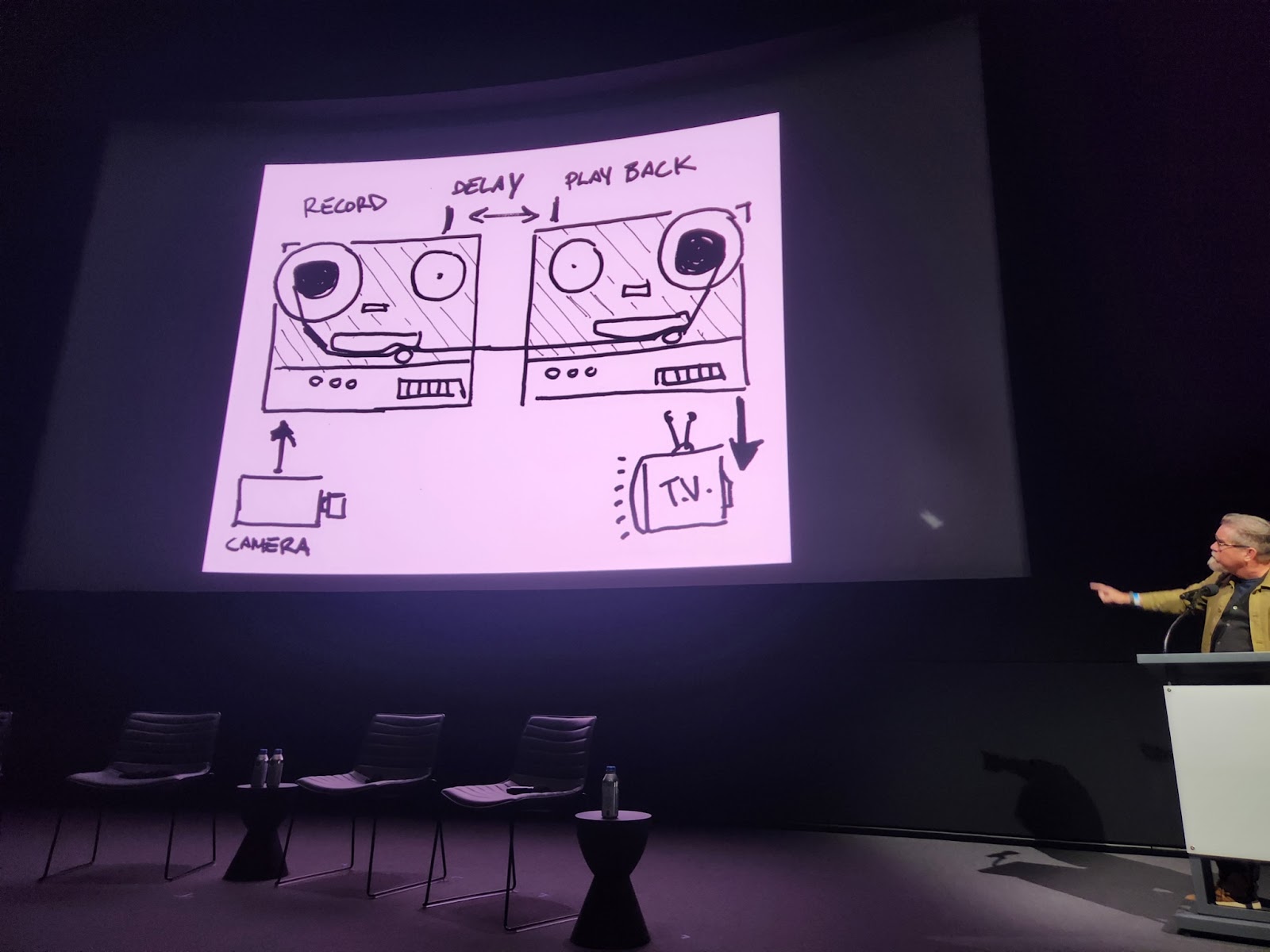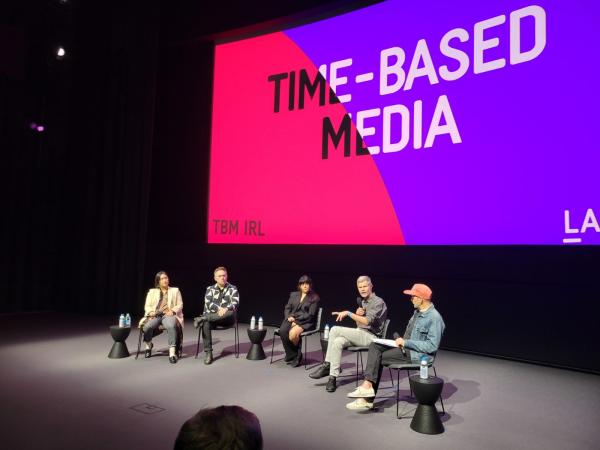“Time-based media” is a term for defining durational, variable, and technology-based artwork—for example, video, audio, or computer-based works—popularized in the field of art conservation for the past few decades. The “time” element acknowledges the inevitable impact that time has on works of this nature, to a larger extent than on artworks such as painting and sculpture that do not require the same element of embodiment in order to continue to exist—embodiment in the form of people who have the authority to speak to the intent of a work as it evolves, to literally re-perform the work or maintain custom elements, or to faithfully represent and preserve these artworks. Indeed this can be a complicated process, and even these understandings of an artwork and the networks that care for them are never completely fixed in time.
LACMA has one of the largest collections of time-based media artworks in the country, and along with peer institutions, has risen to the challenge of caring for these works by building working groups and participating in a myriad of museum networks to establish best practice for acquiring, installing, documenting, and preserving them. It is this very act of collaboration, and the evolving definitions of this type of work, that inspired me to organize an event exploring what it means in practice to care for these works.
TBM IRL: Examining Lifecycles of Time-Based Media Art was a daylong colloquium that took place on October 27, 2023, at the Academy Museum of Motion Pictures. It was an opportunity to gather Los Angeles artists, gallerists, collectors, archivists, estate representatives, and museum professionals to consider what happens when the objects of the present become the relics of the past, with a particular focus on the human element of presenting time-based media—on the challenge of caring for it and presenting it “authentically.” Naturally, “authenticity” is a word that was up for debate in this context. What parts of an artwork define its authenticity across time and inevitable change, and who is authorized to make the decisions about preserving them? Is an artist’s intent always the golden rule? Does a work of art represent a moment in time or should it follow an “ideal state” relative to technological advancement? Or can it do both?

The event brought together diverse voices and experiences and was an amazing showcase of the conservation work taking place in Los Angeles. Topics ranged from artist’s archives (what they are and what they are not), the politics and authority (and authorship) of representing works as they evolve, the practicalities of stewarding works that rely on specific (and obsolescing) technologies, and the uncertainties of what lies ahead given new and emerging technologies (AI, blockchain, “big data,” etc.). It was inspiring to hear how committed everyone is to embodying this practice while also understanding that mistakes are inevitable and a healthy balance of steadfastness and flexibility is key. It was also helpful to hear artists describe how, in many cases, one of the main reasons they gravitate towards making media-based artwork is the element of adaptability and play involved in creating a work. Creating space for this kind of intent towards installing a work can indeed be nebulous, but lends the work a living quality that is often inherent to the experience of the work. Above all, acknowledging how we can be more transparent and honest in our work is necessary with art involving technology, and it reminds us of our humanity in relation to a world that is constantly changing. The act of creating stronger networks of care is constant and iterative, as is the nature of the media that we are trying to preserve.

In some cases more questions were raised than answers, but for me one of the most important takeaways was the importance of advocacy—to ensure that the art world understands the rigor and attentiveness required to care for these works, that we are generating the proper resources and acknowledging the hard work of creating and caring for art, and that we take care to examine how the diffuse nature of digital art and its distribution and the unending appetite for “the new” could potentially lead to a diluting of the artist's intent. Mortality and the fragility of life came up many times, both in regards to the artworks and the people involved. In a way, one of the more unique aspects of this conservation work is how it brings people together and forces us to acknowledge the inevitability of change and demise. How can we be sensitive to this and to each other and, at the end of the day, do our best to create artistic experiences that are both truthful to their origins and continue to inspire audiences for generations to come? The answer may not be simple but, as the colloquium demonstrated, showing up is always the first step.
Many thanks to our speakers Lori Dedeyan (Mike Kelley Foundation for the Arts), Hailey Loman (Los Angeles Contemporary Archive), Jonathan Furmanski (Getty Research Institute), Victoria Fu, Simone Manwarring (Sprueth Magers), Mara McCarthy (The Box Gallery), Bruce Yonemoto, Diana Thater, Jacqueline Kiyomi Gork, Melody Scallion (Coaxial), Sarah Rosalena, Casey Reas, Yvonne Lee (The Huntington), Gabe Barcia-Colombo, and my LACMA colleagues Jessica Gambling, Julia Latane, Emmeline Yen, Mark Ayala, and Joel Ferree. This event was made possible through a generous gift from Suzanne Deal Booth with some support from Myriad Consulting’s NEH-funded Maintenance Culture project.



